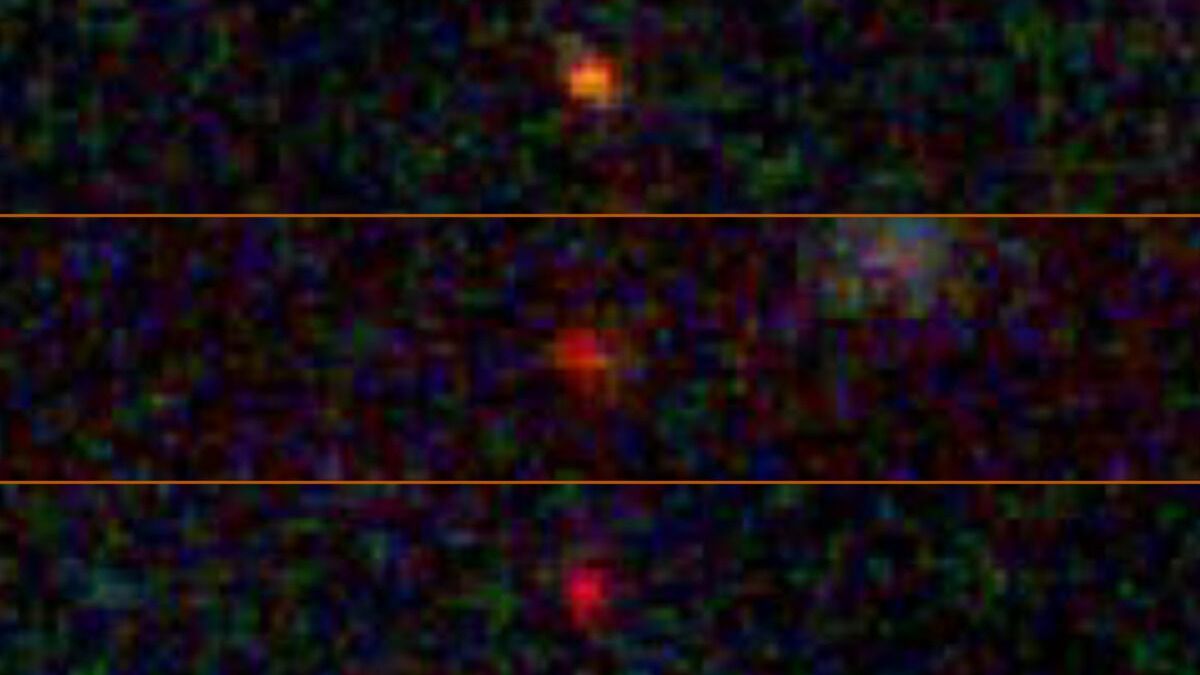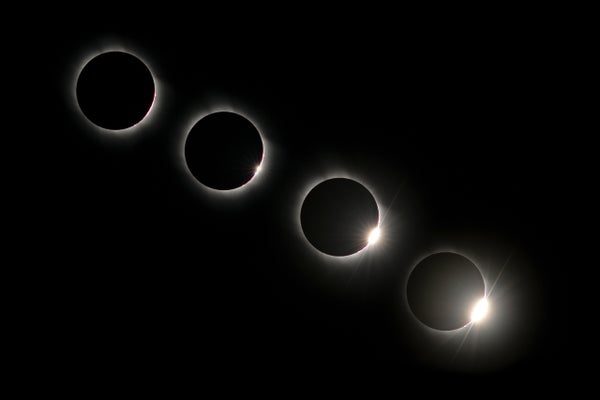NASA’s powerful new eye on the universe may have caught sight of dark matter.
The James Webb Space Telescope (JWST) spotted three candidate “dark stars” that may be powered by particles of annihilating dark matter, according to new peer-reviewed research.
“Discovering a new type of star is pretty interesting all by itself, but discovering it’s dark matter that’s powering this — that would be huge,” study co-author Katherine Freese, director of the Weinberg Institute for Theoretical Physics at the University of Texas, Austin, said in a statement.
Dark matter is believed to constitute most of the material universe, but it cannot be seen by conventional telescopes. We can chart its presence through gravitational effects, such as when a massive galaxy passes in front of a distant star and magnifies the light. Dark stars may be fueled by particles of dark matter, just as “normal” stars like our sun are powered by “normal” matter.
Dark stars, if they do indeed exist, may be key to helping us understand how the universe first got light. For about 15 years, scientists have speculated that “dark stars” were among the first our universe ever produced, when it was just 700 million years old.
Their interesting moniker comes from the song “Dark Star,” first played in 1967 by The Grateful Dead, the research team that first predicted dark stars told Space.com in 2009. (Another inspiration was Crosby, Stills, Nash and Young’s 1977 song, also called “Dark Star.”)
JWST’s observations suggest that the three distant objects, which all are from early in the universe’s history, meet the key characteristics of dark stars: they are luminous, but too cool for fusion to be happening, the July 11 paper in the Proceedings of the National Academy of Sciences stated.
“There are a set of undetermined parameters that control the formation and evolution of a dark star, and ultimately, its observable properties,” the authors cautioned in the study. But they stressed that they had used “plausible values” for the energy of particles of dark matter in building the models for these theoretical objects.
The three candidate dark stars (known as JADES-GS-z13-0, JADES-GS-z12-0, and JADES-GS-z11-0) may be the target of future JWST observations, to look for “dips or excess of light intensity in certain frequency bands” that may match other predictions for the energy of dark stars.
JWST has already thrown other strange puzzles at researchers, such as demonstrating the number of galaxies created in the universe’s early history appear to be too high to match standard models of the history of the cosmos.














